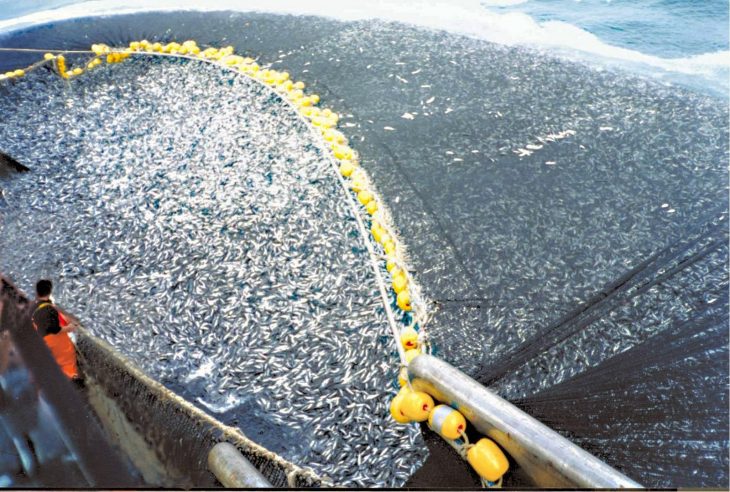More and more, around the globe, fish is what’s for dinner. The average person eats more than 20 kilograms a year, double the level of the 1960s. With rising incomes in developing nations — China especially — driving demand, fish and seafood account for almost a fifth of the animal protein people consume. But all those fish dinners are taking a heavy toll on ocean populations. Even though more than half the fish humans eat are farm-raised today, we’re still pulling too many fish from the sea. Dwindling stocks risk triggering clashes among fishing nations, job losses in an industry that provides a living for one in ten of the world’s people, and in some places, even hunger.
The Situation
About 90 percent of the world’s fishing grounds are being harvested at or beyond their sustainable limits. Some varieties, such as the southern bluefin tuna, are threatened with extinction. Shrinking supplies off the central and western coast of Africa have raised concerns about future food shortagesthere. In the Mediterranean and Black seas, catches have fallen by a thirdsince 2007. Fishing rights have been a source of friction in the South China Sea, where China and Southeast Asian nations have overlapping territorial claims. Indonesia has taken to blowing up foreign trawlers it’s seized for fishing illegally in its waters. And fishing could prove to be a flashpoint in the U.K.’s talks to leave the European Union, as British boats aim to cut competition from foreign fleets and unwind quotas that limited catches.

Online source for data is here
The Background
Nineteenth-century sailing vessels outfitted with nets sometimes decimated local species, such as halibut off the New England coast. But an expanding human population and more advanced technology turned overfishing into a global crisis. Starting in the 1950s, large industrial trawlers equipped with gear such as sonar were able to find and catch many more fish in deeper water. Later, airplanes and satellites were used to locate fish. Commercial fleets embraced destructive techniques, such as using trawling nets to scour the ocean floor. This scoops up and kills large numbers of unwanted fish and creatures such as turtles, dolphins and whales, leaving behind pockets of undersea desert. Today, some countries have limited or banned bottom trawling in their so-called exclusive economic zones, the seas within 200 nautical miles of their shores that they control. The high seas beyond those zones, which make up 64 percent of the ocean, are unregulated and open to plunder. Fishing nations, led by China, have subsidized and overinvested in their fleets; by some estimates, there are two to four times as many fishing boats than are needed.

The Argument
Of the various means of regulating fishing within national waters, so-called catch-shares programs have proved the most successful. These systems grant a portion of the total allowable harvest to individual fishers, communities or companies. They can use the rights to catch fish or they can sell the rights. Since fishers want their shares to rise in price, they have incentives to maximize the value of the catch, fishing when demand is highest and slowing down during spawning season. Such programs sometimes generate opposition in fishing communities for fear they will reduce income, at least temporarily. Still, the U.S., Belize, Chile, Denmark and Namibia have used them to restore overharvested fisheries. Diplomats at the United Nations agreed in mid-2017 to begin negotiations to create protected areas in the high seas, where fishing would be limited or bannedso stocks could recover. Reaching agreement on locations and enforcement mechanisms is a challenge, especially because the top harvesters of the high seas include some of the most politically powerful countries, including the U.S., China and Japan. Meanwhile, aquaculture has boosted the supply of fish while attracting its own critics. Fish farms can release pests and pathogens that harm ocean fish. Plus, farmed fish eat feed largely made from wild fish, further stressing that population. Experiments are underway to treat waste from fish farms, although the ultimate answer may be moving farms far offshore or inland, and using systems similar to those in sewage treatment to remove contaminants.



